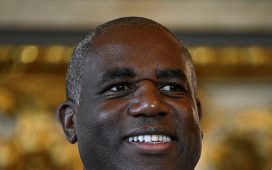Unlock the Editor’s Digest for free
Roula Khalaf, Editor of the FT, selects her favourite stories in this weekly newsletter.
Engineering and construction businesses often involve bidding and contracting for projects at a set price. Bid too high and lose the contract. A low price may win the business but cause problems later.
If input material or other operational costs rise sharply later, and the contractor cannot recover these, it may suffer severe financial distress. In turn, suppliers and subcontractors can suffer as well.
The offshore wind industry has had this problem. Complicated bidding processes, often with government entities with tight budgets, can mean that contracts are unprofitable. Danish offshore wind farm specialist Ørsted has recently had to write down the value of certain US wind contracts for this reason. Its share price is down 59 per cent in the past year alone.
Yet in downtrodden sectors, any hint that the wind is turning is greeted with strong enthusiasm. So it has proved at Vestas. After almost two years of losses, the Danish wind turbine manufacturer made a sliver of profit in the third quarter. Shares jumped sharply higher on Wednesday on this news.
There are signs that business at the €21.5bn company is finally picking up. It led the pack in raising prices for new turbines after 2021. That is starting to bear fruit. Revenues in the third quarter were 11 per cent higher year on year on stable volumes.
Importantly, its pricing power outpaced cost inflation. Fewer supply chain snafus helped. Costs to mitigate project delays fell to their lowest level in two years. Gross margin doubled to 8.1 per cent.
There may be more to come. Vestas believes the average selling price it achieved this quarter was up 5 per cent compared with the previous three months. The second quarter pricing was itself stronger than last year. Meanwhile, both steel and logistics costs are trending down.
There are a number of reasons why Vestas might have seen the worst. For one, it appears to have avoided self-inflicted wounds. Its rival Siemens Energy is experiencing product failures that have resulted in a spate of profit warnings after its acquisition of Gamesa. Also, its focus on land-based turbines means less exposure to offshore wind project cancellations, such as that which recently triggered a $4bn impairment at developer Ørsted.
One breezy quarter does not a summer make. Yet Vestas’s results should give the industry hope. As an equipment provider, it was first to feel the pain of cost rises. It is now first to feel the benefit of cooling inflation and commercial discipline.
There are also signs that buyers of renewable electricity, who ultimately determine the industry’s profitability, may later reprice auctions and contracts to ensure projects go ahead. Sustained evidence of this evolution is required before the industry can fully recover.
Ceres Power/hydrogen: hype bubble needs plenty of time to reflate
Another hopeful contestant in the renewable energy stakes is hydrogen.
The gas may be 14 times lighter than air. But market forces have brought any stocks related to it back to earth with a thud.
A hydrogen hype cycle in early 2020 lifted the market capitalisation of companies such Ceres Power close to that of FTSE 100 utility Centrica. Ceres, worth £2.7bn in early 2021, today is just £419mn.
Ceres has created technology that can produce hydrogen from steam. Its first one megawatt electrolyser will shortly be shipped to a Shell research and development centre in India, it said on Tuesday.
This is not the turning point for Ceres. The solid oxide electrolyser is just a prototype. Its fuel cell technology — which turns hydrogen and oxygen into electricity — is more advanced. But it does not intend to manufacture either product.
Ceres licenses its technology and hopes to reap royalties from manufacturing partners. It thus has a less capital-intensive business than, say, local peer ITM Power which does make its equipment.
Germany’s Bosch and South Korea’s Doosan are early fuel cell partners for Ceres. Both have factories due to open next year. However, a hoped-for joint venture in China is yet to materialise, despite agreeing basic terms last year.
Its growth investment rose 67 per cent last year to £58.4mn, including £12.4mn in capital expenditure as it developed its electrolyser prototype. This should soon peak. Meanwhile revenues, £22.1mn in 2022, are forecast to nearly triple by the end of 2025 as Ceres hopes to start receiving royalties. It should turn a profit in 2027, according to Visible Alpha estimates.
Cash should not be a concern for Ceres, though. It raised £181mn in early 2021. At the end of June, cash stood at £161mn. Though it should get through about £50mn this year, that pace will fall in coming years.
Cleanly produced hydrogen will be needed in large quantities to meet 2050 net zero targets. Even so, UK companies that help produce it will remain niche investments for a few more years yet.













